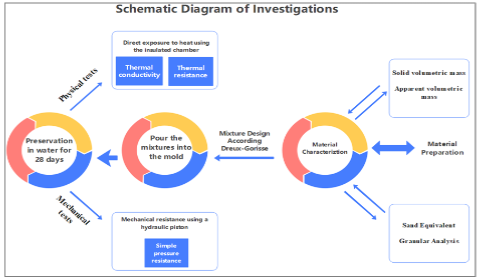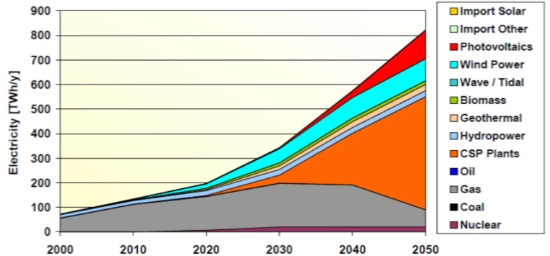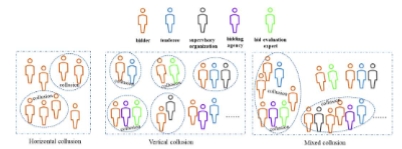Fulfilling the potentials of residential solar energy in Egypt
Abstract
Energy plays a very important role in Egypt’s economic development, but the country has a gap between its produced energy and the demand of its growing population. Utilization of solar power systems in Egypt could help the country to close this gap and fulfil its national and international obligations. However, since 1980, the focus in Egypt has been on large-scale industrial solar projects. Limited attention is given to smaller systems for typical residential buildings. The aim of this research, therefore, is to highlight the potential of small residential solar systems (SRSS) in Egypt. With the huge number of residential buildings accommodating more than 115 million Egyptians, SRSS could be the unearthed gem of a sustainable source of energy in Egypt. The geographical location of Egypt and climate were used to generate solar data using the Global Solar Atlas application. The amounts of monthly and annual solar irradiations were calculated and analysed to decide the best orientation of the system (facing east, west, north, and south), identify the optimum tilt angle of the system, and determine the size of the solar panels. A case study was used to illustrate the procedures of designing SRSS for a typical residential building in Egypt. The results showed that a 26 kWp SRSS oriented facing the east with an optimum tilt angle between 15° and 30° could produce an annual total output of electricity more than the annual demand of the occupants of the studied residential building. Such a system would fit easily on the roof of the building. It was concluded that the installation of SRSS in Egypt could help the country meet the demand of its ever-increasing population if properly regulated, financed, and managed. It is recommended that Egypt develop and implement policies to make installations of SRSS an attractive choice among homeowners and investors by introducing encouraging incentives and creating a competitive market with affordable SRSS.
References
[1]Suzuki E. World’s population will reach ten billion by 2050. World Development Indicators. World Bank; 2019.
[2]World Bank. Urbanization reviews: Urban development overview. Available online: https://www.worldbank.org/en/topic/urbandevelopment/publication/urbanization-reviews (accessed on 22 September 2024).
[3]Tadros W, Naguib S, Wellenstein A, et al. Demographic Trends and Urbanization. Available online: http://documents.worldbank.org/curated/en/260581617988607640 (accessed on 22 September 2024).
[4]Goujan A, Alkitkat H, Lutz W, et al. Population, and human capital growth in Egypt projections to 2051. Workshop on population, human capital and water in Egypt; 2007.
[5]Comsan MNH. Solar energy perspectives in Egypt. In: Proceedings of the 4th Environmental Physics Conference; 2010.
[6]International Energy Agency (IEA). Energy system of Egypt. Middle East report. Available online: https://www.iea.org/countries/egypt (accessed on 22 September 2024).
[7]Trieb F. Concentrating solar power for the Mediterranean region, MED CSP. German Aerospace Center (DLR); 2005.
[8]Salah SI, Eltaweel M, Abeykoon C. Towards a sustainable energy future for Egypt: A systematic review of renewable energy sources, technologies, challenges, and recommendations. Cleaner Engineering and Technology. 2022; 8(100497): 1-30.
[9]Patlitzianas KD. Solar energy in Egypt: Significant business opportunities. Renewable energy. 2011; 36(9): 2305-2311.
[10]Elshazly RM. Feasibility of concentrated solar power under Egyptian conditions. Renewable Energy & Energy Efficiency for the MENA Region [Master’s thesis]. Cairo University & University of Kassel; 2011.
[11]Badr A. Desalination sustainability—The need to think again. Towards a Sustainable Water Future. In: Proceeding of the OICWE 2020; 2021.
[12]Chaichan MT, Kazem HA. Water solar distiller productivity enhancement using concentrating solar water heater and phase change material (PCM), Case Stud. Therm. Eng. 2015; 151–159.
[13]Tan YZ, Wang H, Han L, et al. Photothermal-enhanced and fouling-resistant membrane for solar-assisted membrane distillation. Journal of Membrane Science. 2018; 565: 254-265. doi: 10.1016/j.memsci.2018.08.032
[14]Li R, Zhang L, Shi L, et al. MXene Ti3C2: An Effective 2D Light-to-Heat Conversion Material. ACS Nano. 2017; 11(4): 3752-3759. doi: 10.1021/acsnano.6b08415
[15]Energy Sector Management Assistance Program (ESMAP). From Sun to Roof to Grid: Distributed PV in Energy Sector Strategies. Technical Report 017/21. Washington, DC: World Bank; 2021.
[16]Goetzberger A, Hoffman VU. Photovoltaic Solar Energy Generation. Springer-Verlag; 2005. doi: 10.1007/b137803
[17]Li Q, Monticelli C, Kutlu A, et al. Feasibility of textile envelope integrated flexible photovoltaic in Europe: Carbon footprint assessment and life cycle cost analysis. Journal of Cleaner Production. 2023; 430(139716): 1-12. https://doi.org/10.1016/j.jclepro.2023.139716
[18]Vassiliades C, Lau K, Moiseos R, et al. A climate sensitive design approach to BIPV: Investigating the nexus between solar energy and thermal comfort in cities in Sweden and Cyprus. Building and Environment. 2023; 243: 110681. doi: 10.1016/j.buildenv.2023.110681
[19]Zhou Z, Yuan Z, Yin Z, et al. Progress of semi-transparent emerging photovoltaics for building integrated applications. Green Energy & Environment. 2024; 9(6): 992-1015. doi: 10.1016/j.gee.2023.05.006
[20]Gholami H, Røstvik HN, Müller-Eie D. Holistic economic analysis of building integrated photovoltaics (BIPV) system: Case studies evaluation. Energy and Buildings. 2019; 203(109461). doi: 10.1016/j.enbuild.2019.109461
[21]Li Q, Monticelli C, Zanelli A. Life cycle assessment of organic solar cells and perovskite solar cells with graphene transparent electrodes. Renewable Energy. 2022; (195): 906-917. doi: 10.1016/j.renene.2022.06.075
[22]Li Q, Li T, Kutlu A, et al. Life cycle cost analysis and life cycle assessment of ETFE cushion integrated transparent organic/perovskite solar cells: Comparison with PV glazing skylight. Journal of Building Engineering. 2024; 87(109140): 1-16. doi: 10.1016/j.jobe.2024.109140
[23]Mobarak AM. Solar and wind energy. In: Egypt: the present and the future, 3rd ed. Cairo: Faculty of Engineering e Cairo University; 2008.
[24]Elshafey S, Shehadeh M, Bayoumi A et al. Solar thermal power in Egypt. In: Proceeding of the 2018 IEEE Industry Applications Society Annual Meeting (IAS); 2018.
[25]Wikipedia. Geography of Egypt. Available online: https://en.wikipedia.org/wiki/Geography_of_Egypt (accessed on 22 September 2024).
[26]Khavrus V, Shelevytsky I. Geometry, and the physics of seasons. Physics Education. 2012; 47(6): 680-692.
[27]Wikipedia. Position of the Sun. Available online: https://en.m.wikipedia.org/wiki/Position_of_the_Sun# (accessed on 22 September 2024).
[28]Khavrus V, Shelevytsky I. Introduction to solar motion geometry based on a simple model. Physics Education. 2010; 45(6): 641-655. doi: 10.1088/0031-9120/45/6/010
[29]Jenkins A. The Sun’s position in the sky. European Journal of Physics. 2013; 34(3): 633. doi: 10.1088/0143-0807/34/3/633
Copyright (c) 2024 Atef Badr

This work is licensed under a Creative Commons Attribution 4.0 International License.












